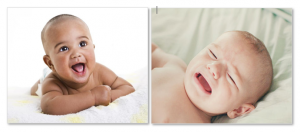Culture of Self and Personality

You have probably noticed that some people are very social and outgoing while others are very quiet and reserved. Some people seem to worry a lot while others never seem to get anxious. Each time we use words like social, outgoing, reserved or anxious to describe people around us, we are talking about a person’s personality. Personality is one of the things that make us unique from one another. Our personalities are thought to be long term, stable, and not easily changed (Caspi, Roberts, & Shiner, 2005) leading some psychologists argue that personality is heritable and biological.
Learning Objectives
At the end of the chapter, you should be able to:
- Describe how identity is different from self.
- Distinguish between personal self and social self.
- Describe the three common characteristics of self-concept.
- Distinguish between interdependent and independent.
- Explain how culture impacts self and self-concept.
- Distinguish between enhancement and effacement.
- Explain how culture influences enhancement and effacement.
- Identify the three criteria of personality.
- Describe each of the Big Five personality traits, and the low and high end of the dimension.
- Distinguish between cross-cultural psychology and indigenous perspectives of personality.
- Distinguish between the two views of personality and culture.
- Explain how personality is different than perspectives on self and personality.

